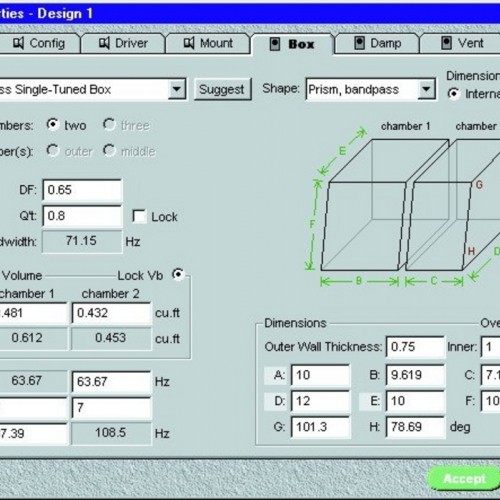Frequenzweiche Berechnen Software Development
Calculates passive crossovers values needed for 6 dB, 12 dB and 18 dB/octave slopes. Design High-pass, Low-pass, Band-pass, Narrow bandwidth Band-pass. Measuring the Velocity of your Agile Scrum Team. Teams new to agile software development should just dive in and select an initial velocity using available.
Watch this course anytime, anywhere. Course Contents • Vorschau Vorschau • • 1. Werkzeuge und Arbeitstechniken 1. Werkzeuge und Arbeitstechniken • • • • • • • 2.
Spezielle Diagrammtypen 2. Spezielle Diagrammtypen • • • • • • • • 3.
Steuerelemente und Datenschnitte 3. Steuerelemente und Datenschnitte • • • • • • • • • Praxisbeispiel: Besucherzahlen einer Website Praxisbeispiel: Besucherzahlen einer Website • • • • • • • • • • Praxisbeispiel: Report zum Produktverkauf Praxisbeispiel: Report zum Produktverkauf • • • • • • • •.
Measuring Integrated Progress on Agile Software Development Projects Tamara Sulaiman, PMP, CST, SolutionsIQ, Hubert Smits, CST, Rally Software, Summary Earned Value Management (EVM) is a well known project management technique which measures the integration of technical performance, cost and schedule against planned performance within a given project. The result is a simple set of metrics providing early warnings of performance issues, allowing for timely and appropriate adjustments. In addition, EVM improves the definition of project scope, and provides valuable metrics for communicating progress to stakeholders. The information generated helps to keep the project team focused on making progress. Despite the benefits that can be gained, EVM techniques they have been slow to be adopted in the private sector, especially in the area of software development.
In many industrialized government sectors the acceptance rate is much higher. Many project managers in the private sector have hesitated to use EVM because they perceive the practices hard to implement. Agile software development methods have been shown to be effective: software is developed faster, with higher quality, and better meeting changing business priorities and changing market conditions.  The prevailing wisdom was that EVM techniques were too difficult to implement effectively on an Agile project, and that EVM could not easily cope with changing requirements. The EVM techniques have been adopted for Agile projects, and the correctness of the results has been proven [1]. AgileEVM is a light-weight, and easy to use adaptation of the traditional EVM techniques which provides the benefits of traditional EVM in Agile projects. Among the benefits of AgileEVM is the ability to use the techniques on simple Agile projects (single team, short duration) as well as on scaled Agile projects (multiple teams at the program or portfolio level).
The prevailing wisdom was that EVM techniques were too difficult to implement effectively on an Agile project, and that EVM could not easily cope with changing requirements. The EVM techniques have been adopted for Agile projects, and the correctness of the results has been proven [1]. AgileEVM is a light-weight, and easy to use adaptation of the traditional EVM techniques which provides the benefits of traditional EVM in Agile projects. Among the benefits of AgileEVM is the ability to use the techniques on simple Agile projects (single team, short duration) as well as on scaled Agile projects (multiple teams at the program or portfolio level).
Earned Value and Planned Value calculations for individual teams can be combined for a concise overall picture of the performance of the program against the plan. Because the AgileEVM metrics are expressed the same way that traditional EVM metrics are expressed, a ‘roll-up’ across hybrid programs (mix of traditional and Agile teams) is also possible. Why Use Earned Value Management Techniques for Software Development? It has traditionally been seen as difficult to accurately forecast final project costs for any software development project. The actual performance of a project (teams ahead or behind schedule or budget) cannot be converted easily to a cost forecast. The best option that project managers have is to use notoriously inaccurate estimates of cost of work for this purpose. In a 1998 article, Fleming and Koppelman [2] assert that 'The single most important benefit of employing earned value is the cost efficiency readings it provides'.

Earned Value Management has been a recognized project management technique since the 1960’s. Military times guide to military installations worldwide tattoo. It is the subject of in-depth study by the Project Management Institute’s (PMI) College of Performance Management and is now included as a standard in the 'Guide to the Project Management Body of Knowledge' published periodically by the PMI.